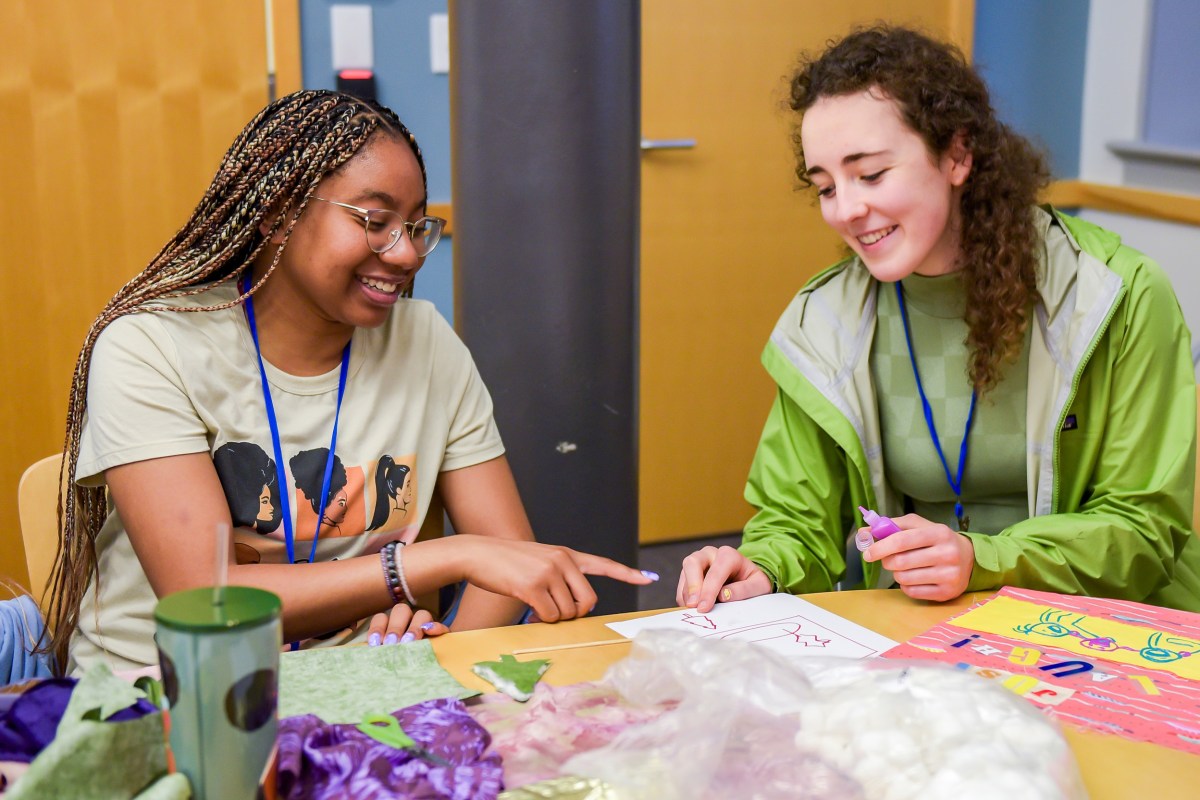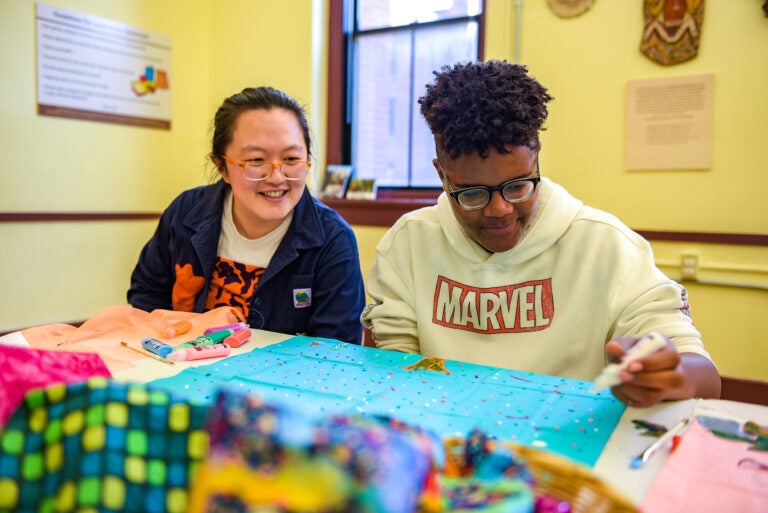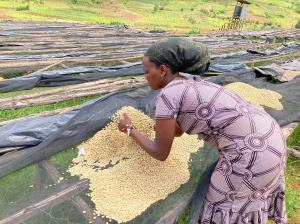Where We Belong art project brings community together

Candace Howe (left) and Bimba Carpenter work on a project. Photos by Julieta Sarmiento/ EJSP Visual
First-year Bimba Carpenter lifted her artwork from the table. Moments earlier, she had finished a design, carefully rendered in puff paint on a rectangle of fabric, featuring laughing people and the text, “Just laugh!” But now the paint was accidentally smeared. The lesson? Mistakes will be made, and we may as well laugh about them. “Well, that just proves the point,” she said — laughing.
Carpenter was one of 16 First-Year Arts Program students joining the Where We Belong: Tree Chuangs community art project. More than 60 people from Harvard and community organizations contributed individual artworks responding to prompts such as “What gives you a sense of belonging?” and “What is something you loved learning in your life?”
Commissioned by Harvard Museums of Science & Culture (HMSC), Brooklyn artist Xinan Ran will create hanging sculptures from the artworks in the form of traditional Chinese chuangs — cylindrical textiles covered in written prayers to keep Buddhist teachings active when no one is present to recite them. Three trees on the Harvard Museum of Natural History’s front lawn will each support a sculpture from Sept. 8 to Oct. 31.

Artist Xinan Ran (left) and Toni Houston, a member of HMSC’s Teen Saturdays/¡Sábados de Jóvenes en el Museo! program, add details to the project.
Ran delights in inviting people to develop stories and methods of their own using sun prints, fabric collages, and vinyl word art. “There are not a lot of craft projects for adults,” she says. Where We Belong gives them “permission to play.” Ran hopes the project will jumpstart the feelings about belonging at Harvard.
Candace Howe represented her “village” — her family and friends — “because I have a really big one. It’s important to have people that support you and that you support them.” She depicted her village as evergreen trees.

Left: Alejandra Conrado works on her piñata design. Right: Conrado confers with Daniel Liu.
Alejandra Conrado learned to make piñatas her senior year in high school, inspired by a great teacher. Her design featured piñata-like ruffles, “bringing all the stories and great conversations that I had with my teacher, and a little piece of my [Nicaraguan] culture.”
Most First-Year Arts Program students responded to the “what have you loved to learn in your life” question, while the act of creating together seemed to build community among all the participants, including Harvard staff, graduate students, and the local senior center.
All are welcome at the opening of the tree chuangs on the Harvard Museum of Natural History lawn on Sept. 8 at 4 p.m. for iced tea, potluck desserts, and an open mic to share responses to the sculptures. Visitors are invited to gently zip themselves, one at a time, inside the tree chuangs, reflect, and share reflections with others.




